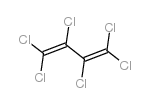Land contamination and urinary abnormalities: cause for concern?
B Staples, M L P Howse, H Mason, G M Bell
文献索引:Occup. Environ. Med. 60(7) , 463-7, (2003)
全文:HTML全文
摘要
To determine the prevalence of proteinuira and enzymuria among a cohort of subjects exposed to hexachlorobutadiene (HCBD) in their homes and to determine whether there was a change in observed effects when exposure ceased.Residents underwent a health check, which included a panel of urinary markers of both glomerular and tubular origin, within two months of cessation of long term exposure to HCBD and again at least 10 months after exposure ceased. Analysis of the results was performed to determine if there was any early evidence of renal effects, and to ascertain whether changes in these parameters occurred after exposure to HCBD ceased.Tubular proteinuria and enzymuria were increased in the initial health check and significantly decreased after the residents had left their homes for about 10 months. As the early renal tubular markers improved when exposure ceased it is anticipated that the long term nephrotoxic risk will be minimal, but the carcinogenic risk remains unknown.Results show there was a renal effect which improved when subjects left their homes. This suggests there was a local environmental factor responsible for the observations. This is consistent with the predicted toxicological effects of HCBD from animal studies.
相关化合物
| 结构式 | 名称/CAS号 | 分子式 | 全部文献 |
|---|---|---|---|
 |
六氯-1,3-丁二烯
CAS:87-68-3 |
C4Cl6 |
|
Developing structure-activity relationships for the predicti...
2010-07-19 [Chem. Res. Toxicol. 23 , 1215-22, (2010)] |
|
Optimizations of packed sorbent and inlet temperature for la...
2014-08-22 [J. Chromatogr. A. 1356 , 221-9, (2014)] |
|
An integrated treatability protocol for biotreatment/bioreme...
2003-04-01 [J. Environ. Sci. Health. A. Tox. Hazard. Subst. Environ. Eng. 38(4) , 597-607, (2003)] |
|
Reducing ingress of organic vapours into homes situated on c...
2004-04-01 [Environ. Technol. 25(4) , 443-50, (2004)] |
|
Nephrotoxicity of hexachloro-1:3-butadiene in the male Hanov...
2012-06-01 [J. Appl. Toxicol. 32(6) , 417-28, (2012)] |